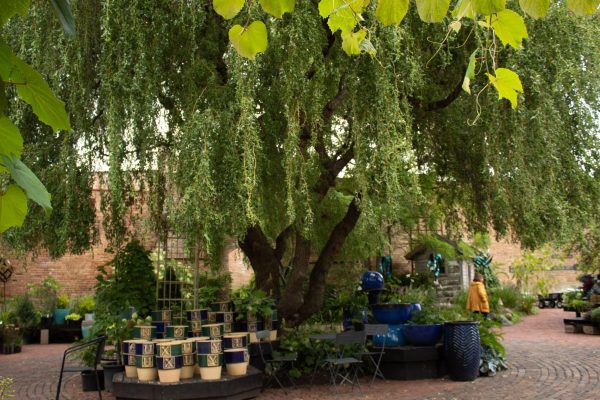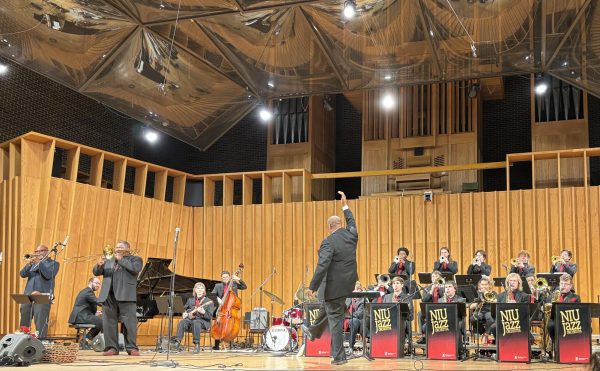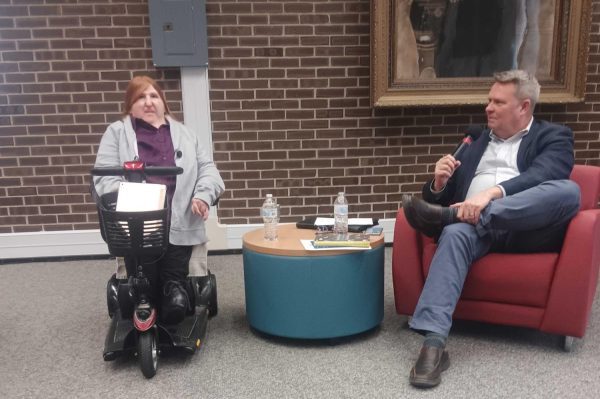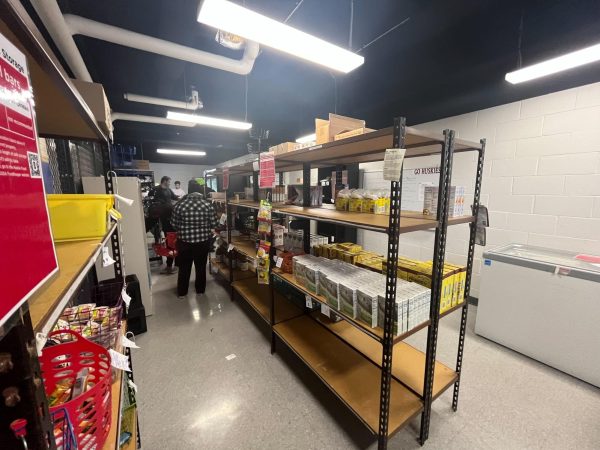Studying traditional Okinawa martial art
October 27, 2005
Tough physical training, intense mental discipline and finding a spiritual center sounds like a mix of the Marines, NASA and a monk. However, all three of these traits are offered by the Northern Illinois Shotokan.
“Shotokan is the traditional Okinawan martial art,” said Jacob Burlingame, a student at large with a master’s degree in education and leadership. “Okinawa is a really small island way south of the mainland Japan, and thus it kind of developed out of the interrelationship between China and Okinawa trade.”
Shotokan was originally China’s martial arts style, Chinese Boxing. When the Chinese Boxing became more Okinawan in style, it transformed into a karate, which means ‘Way of the Empty Hand.’ The people of Okinawa were able to develop the Shotokan style because of a ban on weapons and most other martial activities.
The Northern Illinois Shotokan are members of a much larger national organization; the Shotokan Karate of America, which is a nonprofit karate organization. It was founded in 1955 by Tsutomu Ohshima.
“The club here was started in 1976,” Burlingame said. “It’s been around for a long time. Its had its ups and downs in terms of membership and things like that. We’ve been trying to build our numbers back up since Doug Overton – the former instructor – left. You know new guys, new faces, kind of under new management type thing.”
The club has had many instructors throughout the years, but Jacob Burlingame and Jason Thompson are now the current instructors.
“We have five members right now, which we include ourselves in,” said Jason Thompson, a 2005 alumnus with a masters in education. “Membership is a little low right now. We’re starting to get some people back in.”
Even though membership is low, the club is very easy to join and promotes a learning environment.
“We’re definitely not masters,” Burlingame said. “We’re all kind of learning together here. The requirements to join are really easy, you just have to want to practice. There is a small yearly [fee] and that goes to the National Organization. We’re non-profit. Jason and I teach because we like Karate.”
Members of the club are required to buy their own gui, which are the uniforms used in practices and competitions.
“It’s about 30 bucks per uniform,” Burlingame said. “If they can shop around, they don’t have to buy it through us, but I think we can get it pretty cheap for about thirty bucks.”
The club members also arrange meetings with other Shotokan Karate of America clubs to help train and improve their skills. Some of these meetings between the clubs are very official, while other meetings are more of an informal way to get together.
“There are regional get-togethers,” Burlingame said. The weekend of Nov. 4 through 6 there will be what we call ‘Special Training,’ which is basically a get together for the weekend to practice really hard. Some of its about building skill and a lot of it is about building a certain mental stamina.”
For students unsure of joining the club but interested in learning more about Shotokan, they can try KNPE 133, a karate class. The class is taught by former instructor Overton.
“I took the KNPE 133 class and decided I wanted a little bit more,” said Bill Ziegler, a 2004 alumnus with a degree in mechanical engineering. “So I came to the club and joined as soon as I could. I feel better about myself physically, spiritually and mentally.”
Northern Illinois Shotokan meets three times a week: Tuesday and Thursday evenings from 7 to 9 p.m. and Sunday afternoons 5 to 7 p.m. at the Campus Recreation Center.









